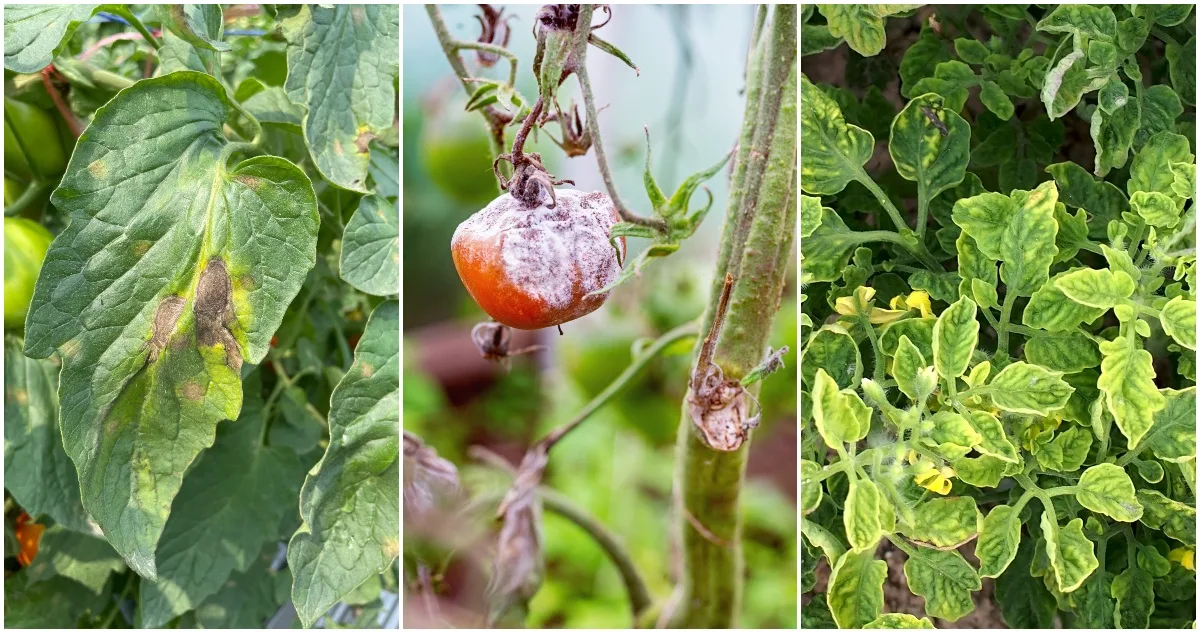
You can do everything right. You can start your tomato seeds in the right way, you can transplant your seedlings at the right time spacing them far enough apart, you can feed, water and prune your plants throughout the season – but still diseases happen. And with tomatoes it seems there are more diseases than any other garden vegetable.
That said, it may be reassuring to learn that even when your plants do succumb to disease, this will not usually entirely kill the plant. So, if you act quickly, you are unlikely to lose your plants altogether.
It is also important to realise that when your tomato plants have a problem, they may not have a disease at all. In the first part of this article, we will discuss some common tomato plant diseases. But after that, we’ll also cover some other tomato plant problems that are not caused by disease. Some are merely environmental, while others are down to insect infestations.
Common tomato plant diseases all involve either a fungus, a bacteria, or a virus. Fungal infections are most frequently seen. But neither bacterial nor viral infections are all that rare. In most cases, as with most things, prevention is better than cure. Usually, these infections are able to invade more easily due to environmental problems.
Preventing Tomato Plant Diseases
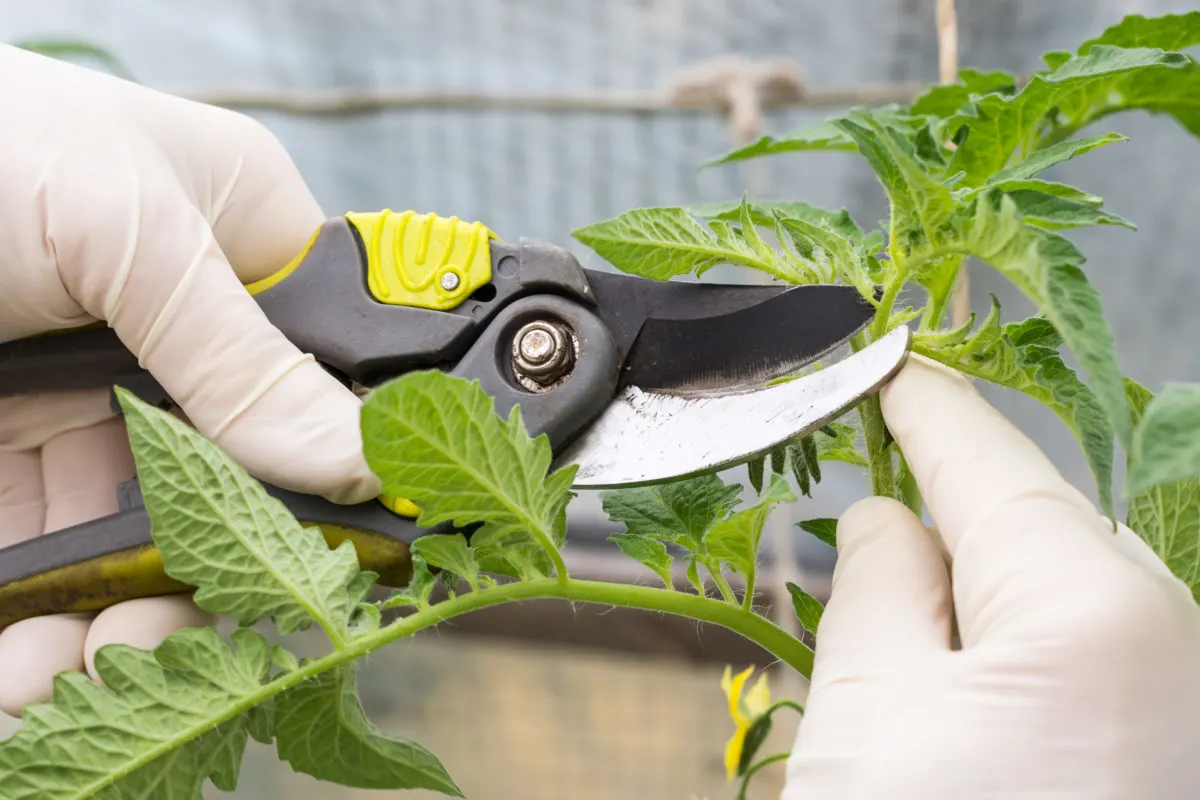
In terms of the environment, cutting down on the incidence of tomato diseases involves:
- Keeping your tomatoes generally as healthy as they can be.
- Not watering too much, or too little.
- Watering plants early in the day so leaves are dry by dusk.
- Not watering from above, and making sure water does not splash soil up onto foliage or fruits.
- Providing the right temperatures.
- Using a good quality organic mulch and keeping tomato plants up off the soil.
- Not overcrowding plants and ensuring good airflow.
- Keeping an eye on humidity and providing the right level of humidity for your plants.
- Practicing good hygiene when it comes to tools, containers and growing areas.
You should also feed tomato plants in order to get good fruits. You should always feed with a high potassium feed, not a high nitrogen one because a high nitrogen one will encourage leafy growth at the expense of the fruit and leafy tomato plants are more susceptible to problems.
Crop Rotation is Crucial
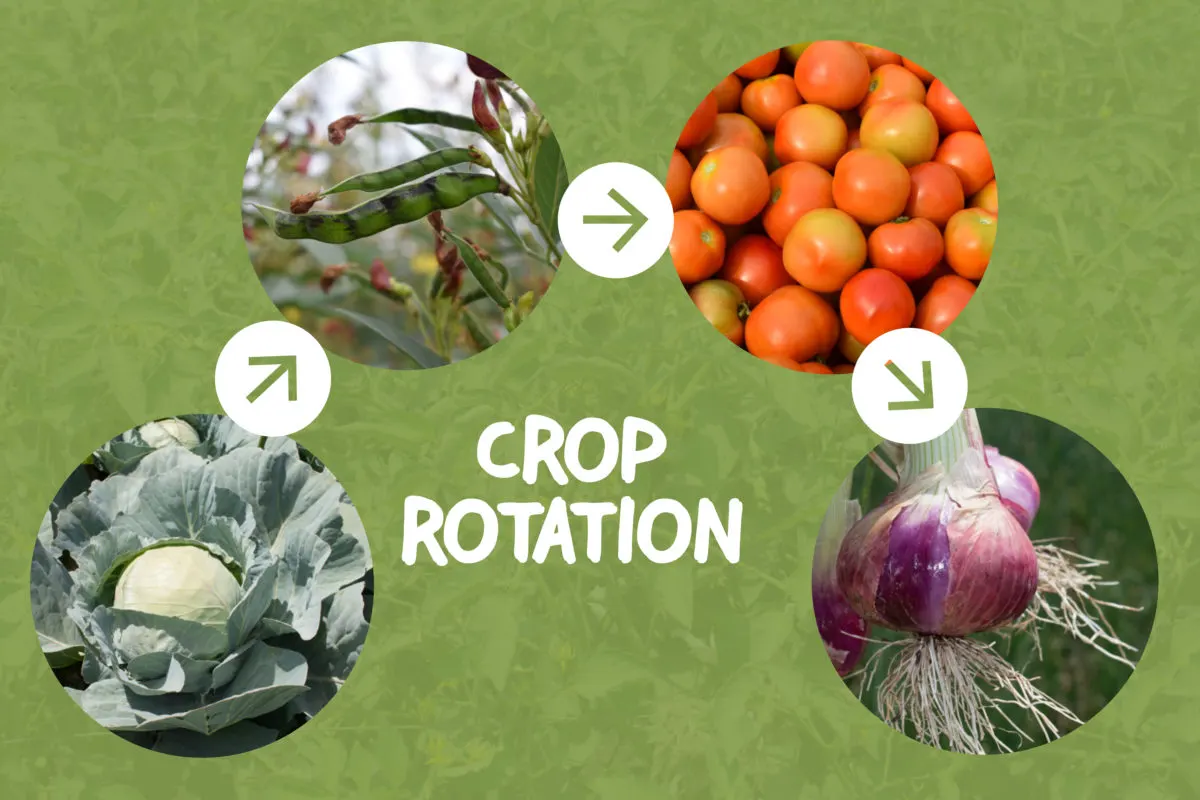
Since many of the fungi, bacteria or viruses can survive in the soil over winter, crop rotation is crucial. You should not grow your tomatoes in the same spot year after year. Try to implement at least a three year and ideally a four year crop rotation plan. Avoid planting tomatoes (or any other members of the same plant family) in the same place two years running.
Reducing your chances of a disease through the methods above are really the best ways to avoid a crop disaster. But if you persistently have problems with disease in your tomato plants even though you are going everything you can to raise healthy plants, then you should probably consider opting for resistant varietals.
Which diseases you are likely to see will, of course, depend on where you live. Some are common only in certain parts of the world. However, here we will cover the most common tomato plant diseases that you may encounter.
Treating Fungal Diseases With Organic Fungicides
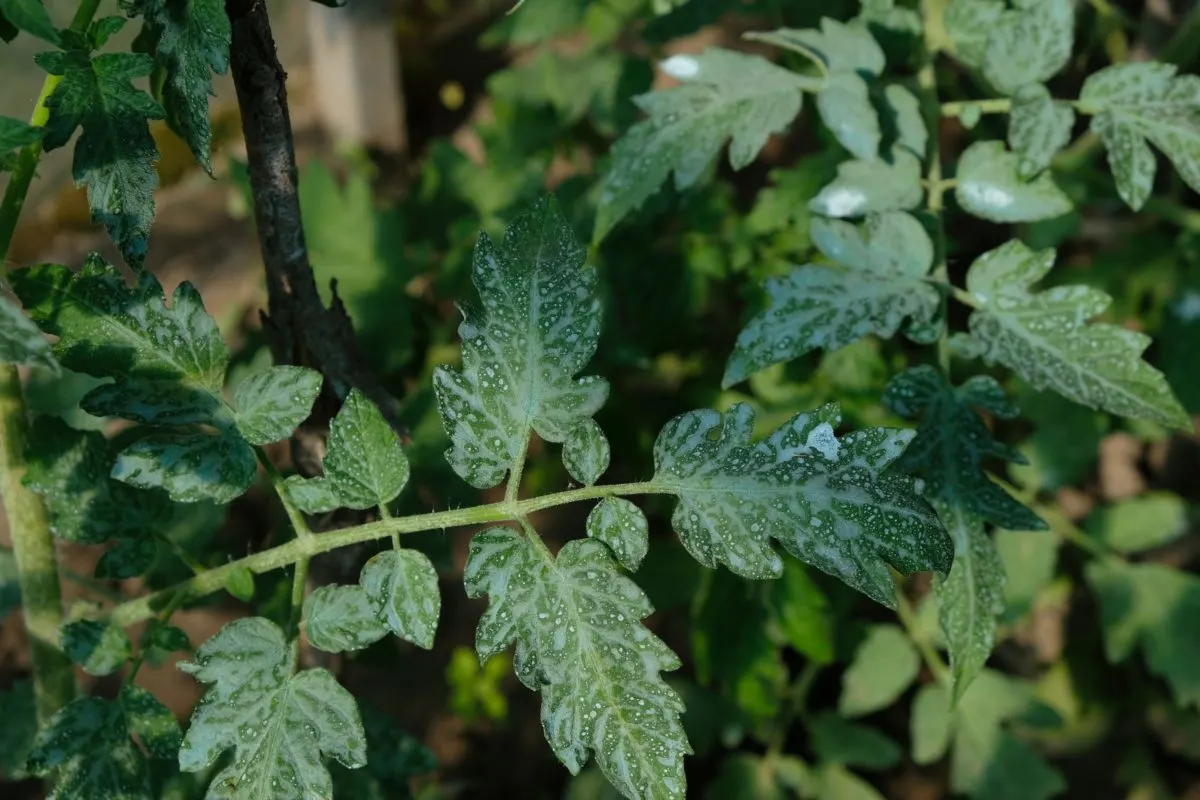
Copper sprays are sometimes used to tackle blight and other fungal infections. However, it is important to use caution if you do decide to go down this route. Copper, if used frequently, can build up in the soil and cause toxicity. Copper spray may also do harm to bees.
Mild fungal infections can also sometimes be treated with home-made organic fungicides such as:
- A solution of 10g bicarbonate of soda to 1 litre water sprayed on leaves.
- 5% apple cider vinegar in 1 gallon of water, sprayed on the leaves in the cool morning hours.
- A solution of 1 oz milk to 9 oz water every 3-4 days after you first spot the problem.
- A spray made from 1 cup cornmeal in 5 gallons of water, with solids filtered out.
- A blended and strained solution of 1 garlic bulb, 2 tbsp canola oil, 4 hot peppers and 1 lemon. 4 tbsp of this mix added to 1 gallon of water and sprayed onto your plants.
- A solution of 1 cup of horseradish roots blended, soaked in 16 oz of water for 24 hours then strained and sprayed.
Each of the above can have (limited) efficacy in dealing with a range of fungal issues. But may be somewhat effective in reducing spread of disease into your other tomato plants nearby when used prophylactically.
You can also reduce the changes of late blight (the most serious fungal issue) from setting in by using an activated hydrogen peroxide fungicide or a fungicide containing Streptomyces lydicus – a beneficial bacteria.
However, if a bad fungal infection has already set in, then it may well be too late to do much. These solutions generally just help to avoid a problem from spreading further.
Fungal Tomato Plant Diseases
First of all, we’ll take a look at some of the fungal infections that you might encounter on your tomato plants. Not all fungal diseases must be treated at all, and some can simply be prevented from spreading. However, in extreme or particularly bad fungal infections, you may decide to apply an organic fungicide.
1. Early Tomato Blight
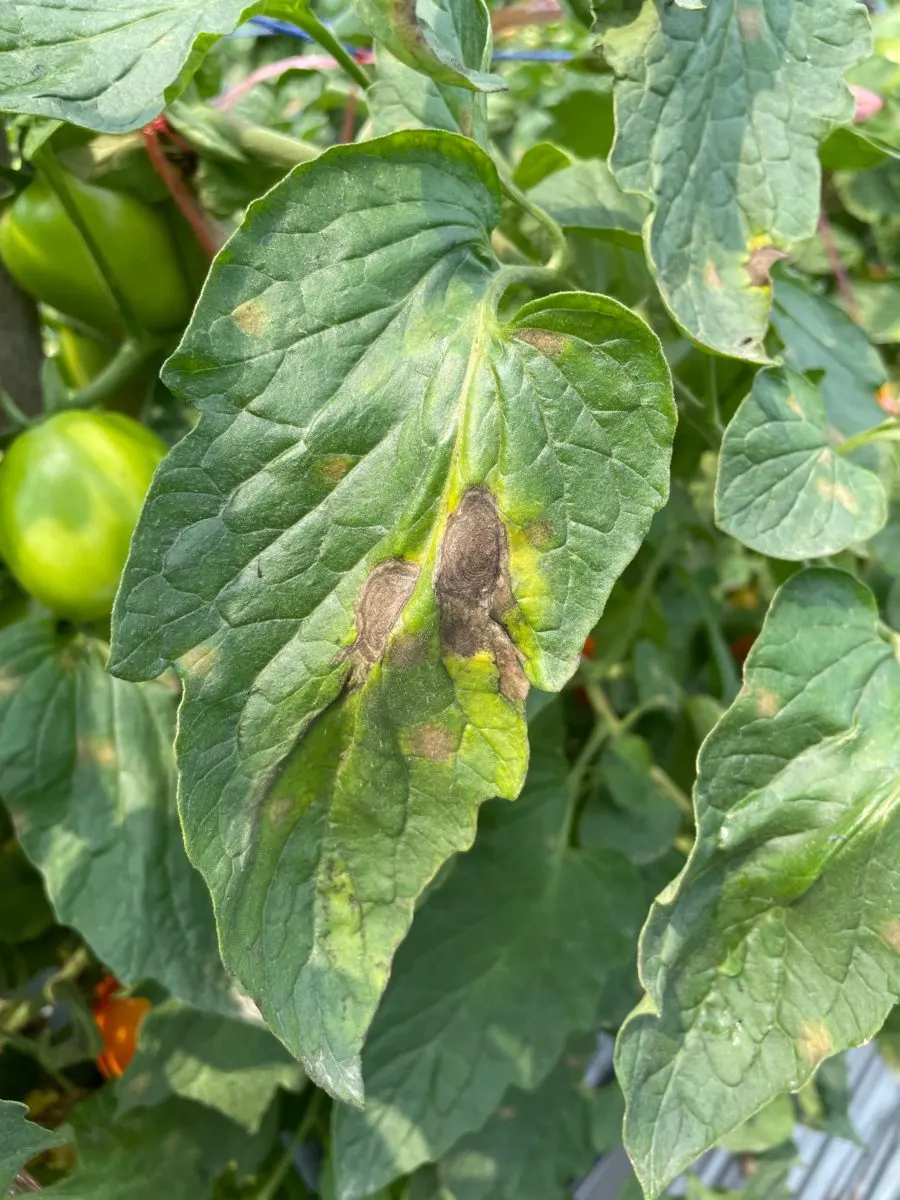
Early tomato blight is caused by a fungus called Alternaria solani. This disease presents with brown spots on tomato leaves, starting with the older ones.
Each spot will start to develop rings, like a target. Gradually, yellow coloration will appear around the brown spots, then the entire leaf will turn brown and fall off.
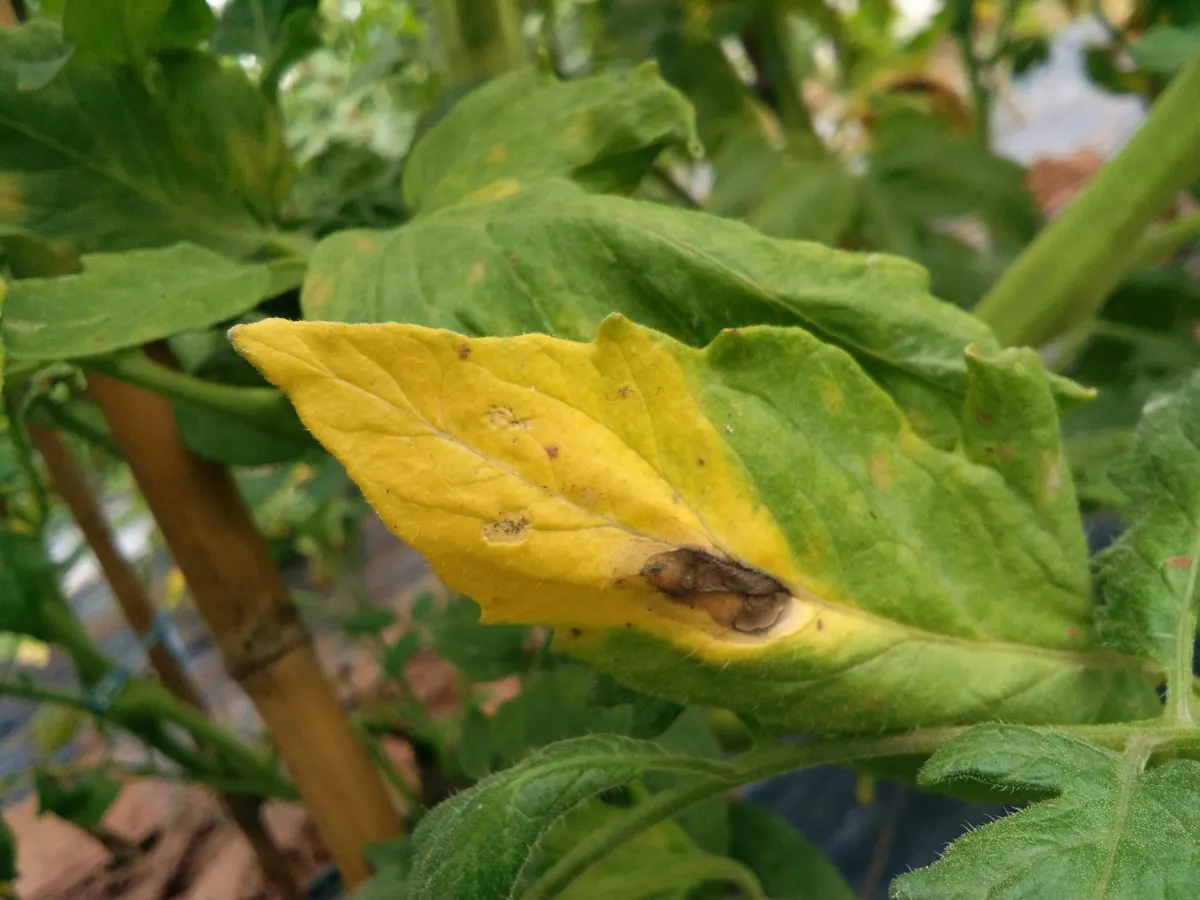
As long as you catch it early, early blight should not prevent your tomato harvest entirely. Remove affected foliage as soon as possible. Make sure you dispose of it far away from your garden growing areas and composting areas. If you do so, your plants may survive and you will go on to get tomatoes. But there will unfortunately not be as many.
2. Late Tomato Blight
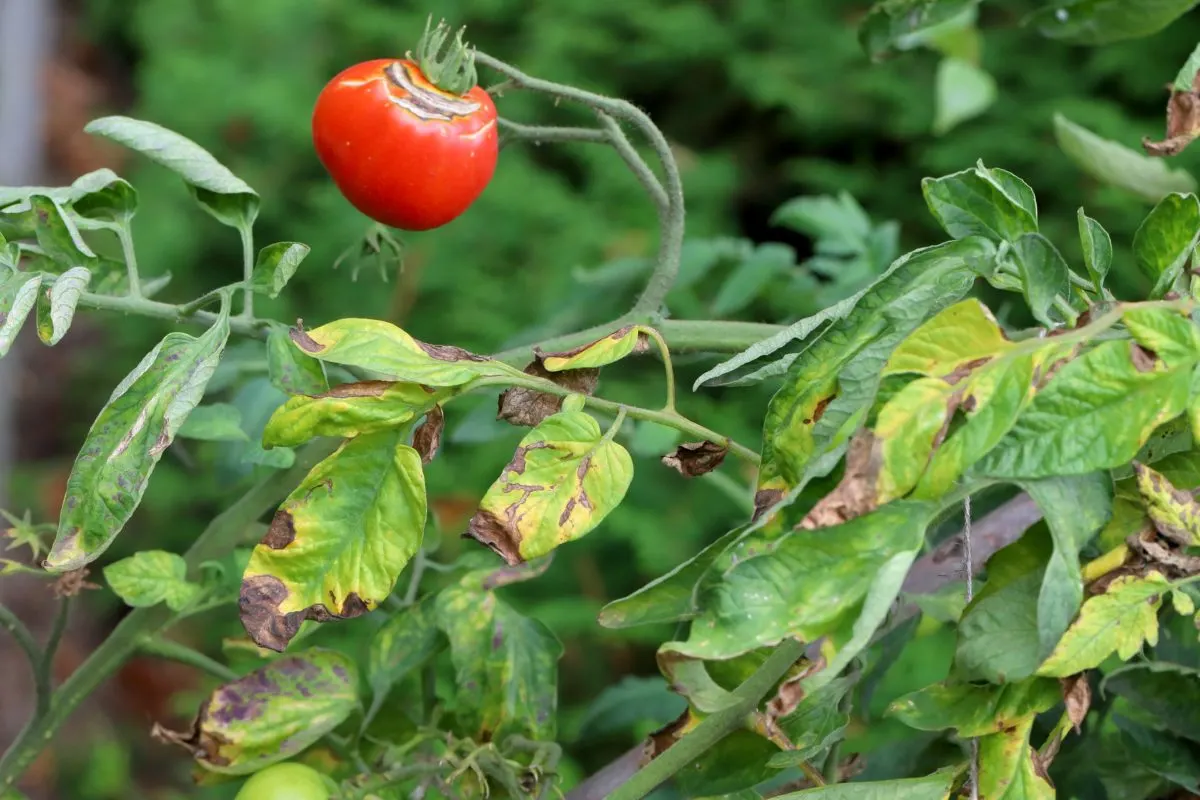
Late tomato blight is, unfortunately, usually a more serious problem. This is one of the most destructive problems you will encounter. And unfortunately it is common in more humid temperate climate zones.
Late blight is caused by a fungus called Phytophthora. This is one of the most common problems experienced with tomato crops – and can be very alarming for new gardeners.
The first symptom of blight in tomatoes is usually brown areas appearing on the leaves, which quickly spread into a watery rot that kills leaves and stems, turning them brown. As blight spreads, fruits on your tomatoes can also turn brown and start to rot on the vine. If left unchecked, this disease can cause a huge problem very quickly.
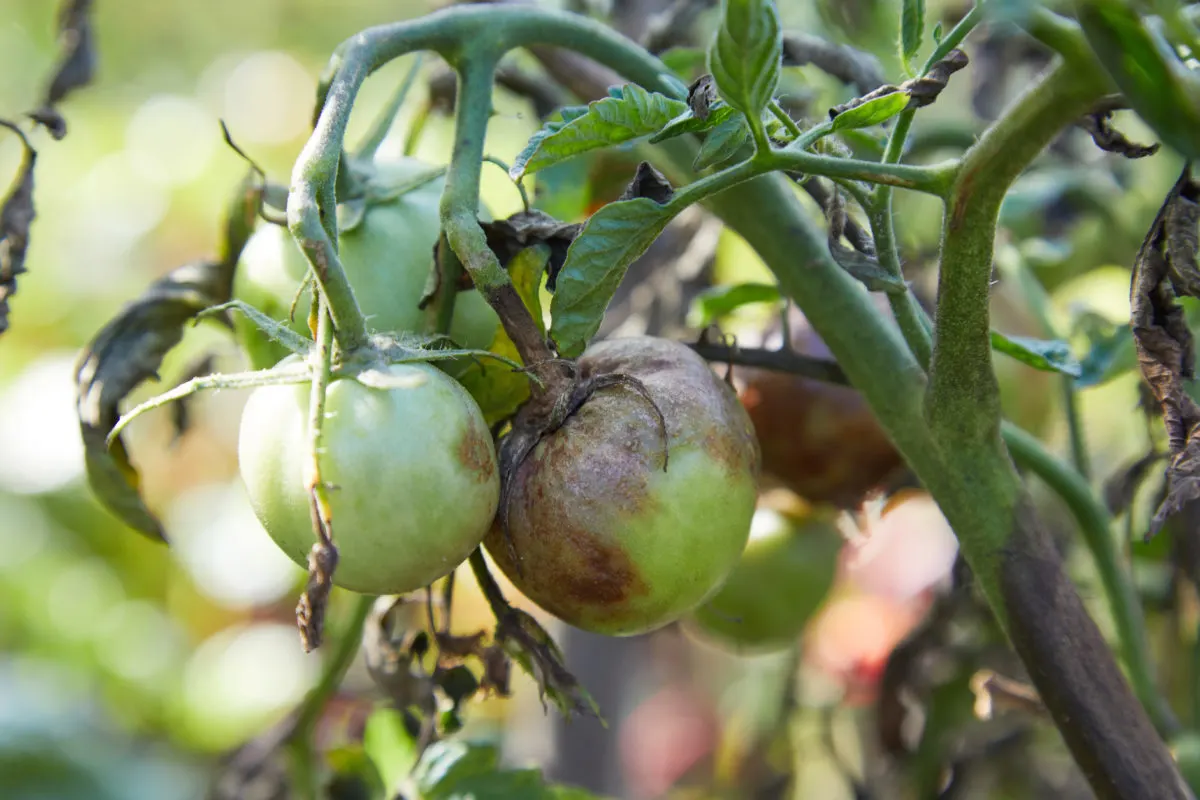
Late tomato blight cannot be totally beaten in cool, moist climates. But the preventative measures mentioned above can go a long way towards reducing the likelihood of outbreaks. Again, be vigilant. Jump on the problem and remove affected plant matter as soon as humanly possible.
Related Reading: Tomato Blight – How To Identify & What To Do About It
3. Southern Blight
Southern blight, also known as southern wilt, southern stem rot and southern root rot, is caused by the soil-borne fungus Sclerotium rolfsii. The disease attacks many plants, including tomatoes, at or just below the soil line.
Southern blight is most likely to occur during the summer, when soil is warm and moist. It is common in the south of the US, but can also occur in more northerly gardens. Symptoms include a discoloration of lower leaves, wilted foliage and plant collapse. When you look closely, you will likely be able to see white hyphae or mycelia around the lower stem, roots and surrounding soil.
Southern blight can, like other blights, remain in the soil for a long time. Remove and destroy all affected material as soon as possible. In warmer climates, solarization (heating up the soil with plastic) is sometimes recommended to get rid of the pathogens responsible. However, this is not recommended, as heating the soil in this way will also damage it and harm beneficial soil organisms.
It is generally best, where recurrent problems have occurred, to simply avoid growing tomatoes and other susceptible crops in that area.
4. Sclerotina Disease/ Tomato Timber Rot
This problem is caused by the related fungus Sclerotinia sclerotiorum. This fungus produces small black, seed-like structures that can live for long periods in the soil. They can cause disease in tomatoes as well as a number of other plants.
If this fungus infects your tomatoes, plants suddenly turn yellow, wilt and collapse. Also, as with the Southern blight described above, this UK pathogen creates a wet rot on plant stems near soil level, and you will discover masses of white fungal strands around the area. Later on, black dots (the small seed-like structures) will appear within this white fungal growth.
Dispose of all material as quickly as you can, taking care to contain the material so it does not spread to other plants in the vicinity.
5. Septoria Leaf Spot
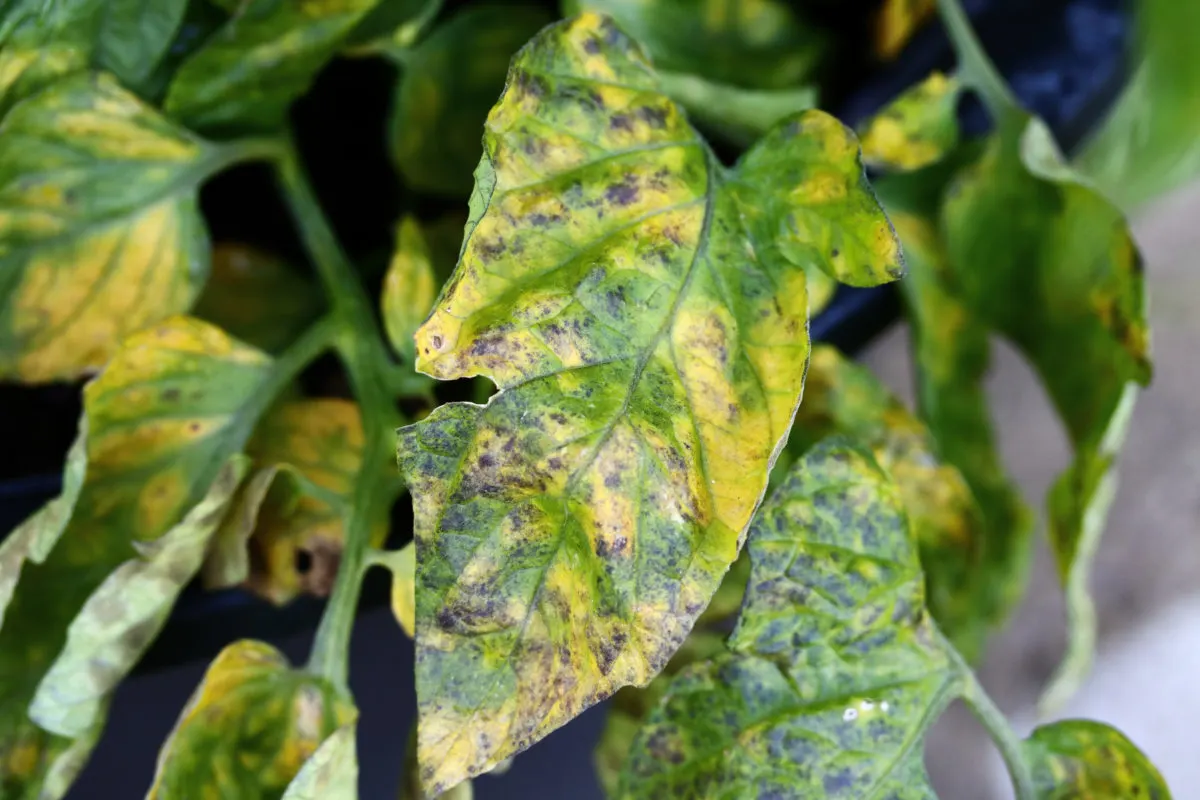
This is a fungus called Septoria lycopersici that infects the leaves of your plant after it has begun to form fruits. Sometimes, this can be mistaken for late blight – though this is largely due to when it can occur. The leaves thus infected take are mottled with yellow spots. Dark grey centres with dark borders appear, then foliage becomes papery, with dark specks.
Pick off leaves affected as soon as you spot them. Avoid watering your plants from above. Watering from above can force the spores forming on the leaves back into the soil and begin the disease cycle again.
Read Next: Black Spots On Tomato Leaves – Dealing With Septoria Leaf Spot
6. Verticillium Wilt
This problem is due to Verticilliurn albo-atrum – another soil borne fungus. This fungus attacks the roots of your tomato plant and travels with water up the xylem tubes. It then prevents the normal flow of water and nutrients to the foliage of the plant.
If this is the problem, yellow splotches will appear on leaves. The problem will start on the lowest leaves and spread upwards. As the blotches spread, the veins on the leaves turn brown, then the leaves completely die and fall off. The disease progresses up the stem and the plant will be stunted.
You may well still get a harvest, depending on when the problem strikes. But it will likely be far poorer than might otherwise have been expected. Unfortunately, once plants have been infected, there is not much you can do. Rotate crops and, if this is a recurrent problem, consider growing resistant varietals.
7. Fusarium Wilt
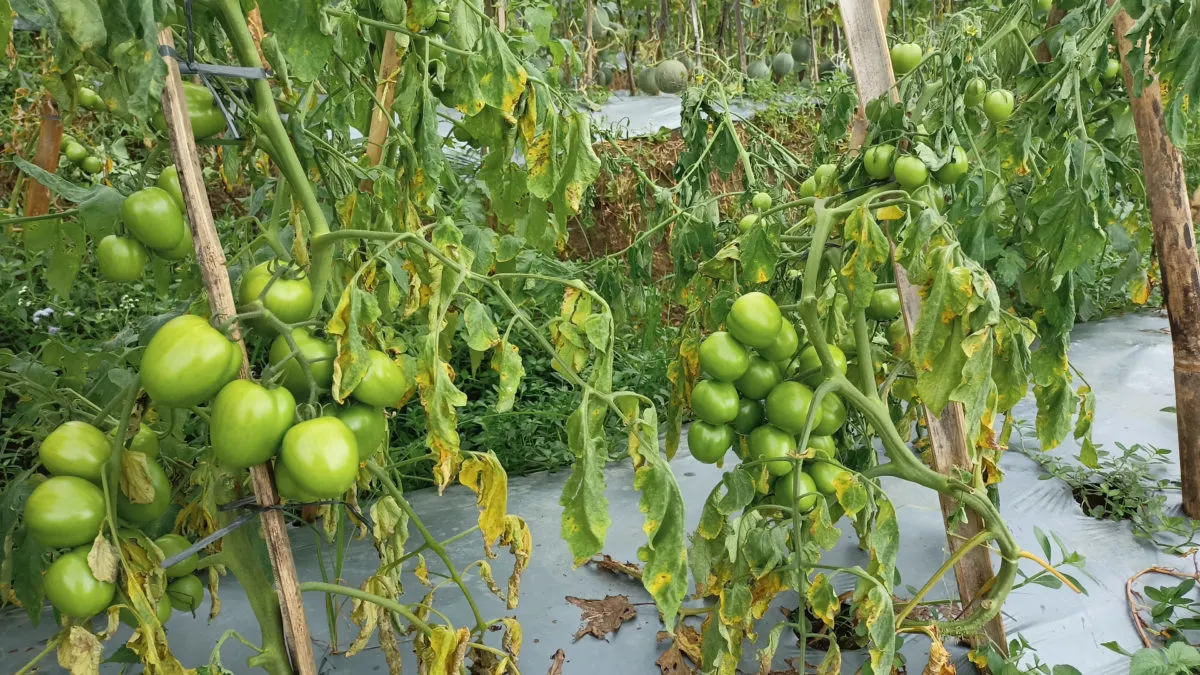
If your tomato plants have been watered and cared for assiduously, but have wilted suddenly and died, fusarium wilt may be the culprit. This fungus, called Fusarium oxysporum f.sp. Lycopersici, is another one which enters at the roots and attacks the vascular system of the plants. Unfortunately, plants may die with this infection, as with their ‘veins’ blocked, they cannot get the water and nutrients they need.
Again, be careful to remove all affected material as soon as possible, and avoid growing tomatoes or other susceptible crops in the area for at least 4-5 years, or remove and replace the contaminated area of soil. Consider growing wilt resistant varietals/ grafted tomatoes.
8. Powdery Mildew
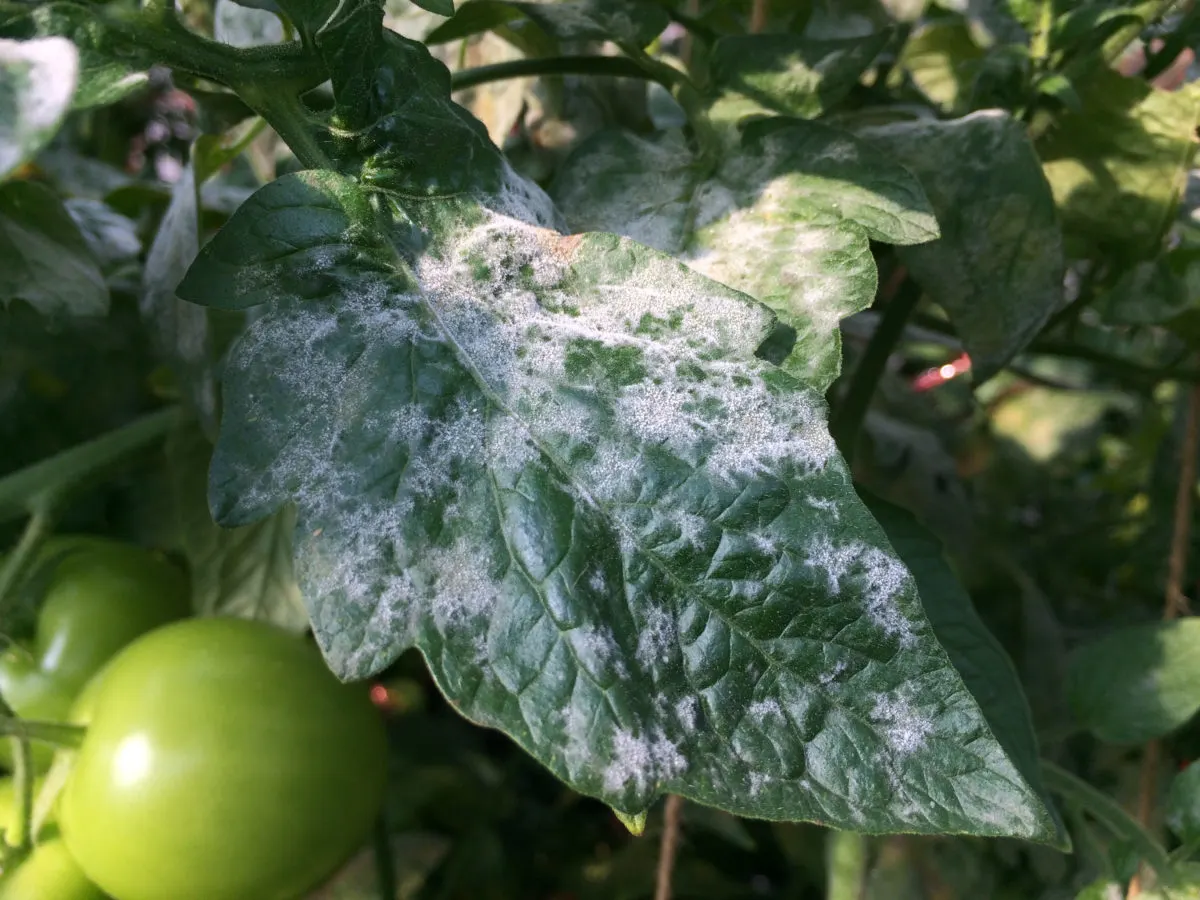
You can identify powdery mildew by noting the white, powdery patches of the fungus that form on upper and lower leaf surfaces, flowers and fruit. With most plants, this fungus will be obvious, and affected plant tissue can be quickly removed. So this is a less problematic disease than the wilts described above.
Usually, once the affected leaves have been removed, the rest of the plant will be okay. Making sure that you remove and destroy all affected leaves will reduce the chances that there will be infectious spores about to spread to other plants or to resurface the following year.
If you have a problem with powdery mildew, spray leaves with the bicarbonate of soda solution, or with a diluted milk solution (one part milk to ten parts water), to slow down its spread.
9. Grey Mold / Botrytis
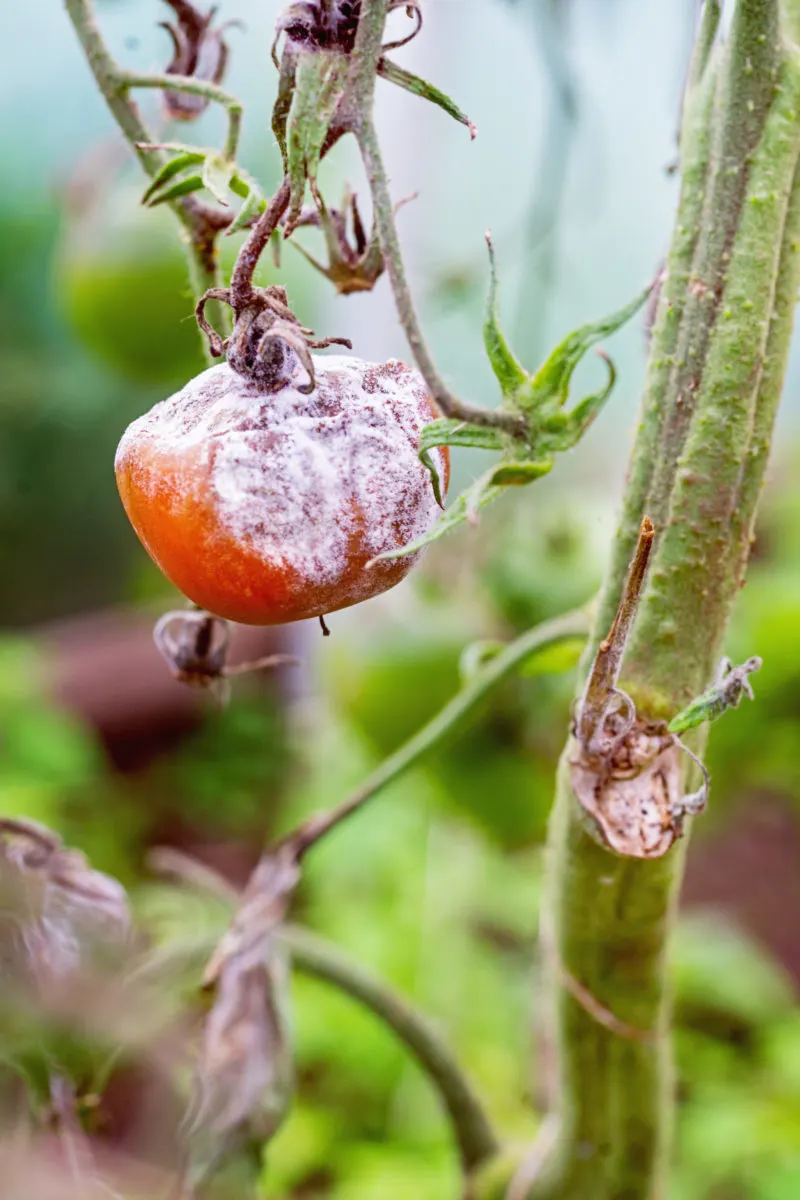
Grey mold, also called Botrytis, is another fungal infection that can be found in tomatoes. It can take hold on all above-ground parts of the tomato plant. Often, it starts at a point of damage or on any decaying tissue.
Infected areas can spread rapidly, covering large areas and causing wilting of the plant above the affected zone. Quick action is important. If you catch it early, and cut out grey mold areas, then you may be able to save the plant.
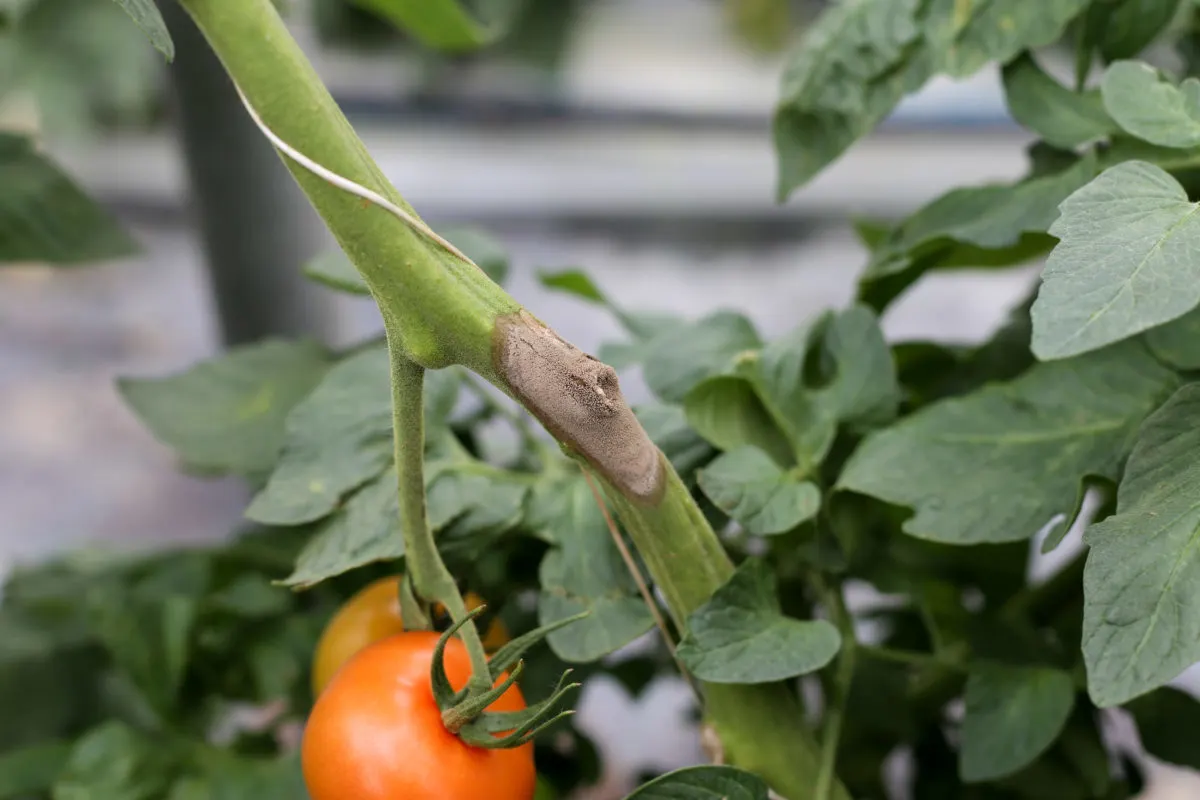
It is more commonly seen in greenhouses, where environmental conditions have not been ideal. The only effective remedy is to remove all affected material carefully. Take care to avoid releasing the clouds of spores to resettle on plants or in the soil.
10. Anthracnose Fungal Infection
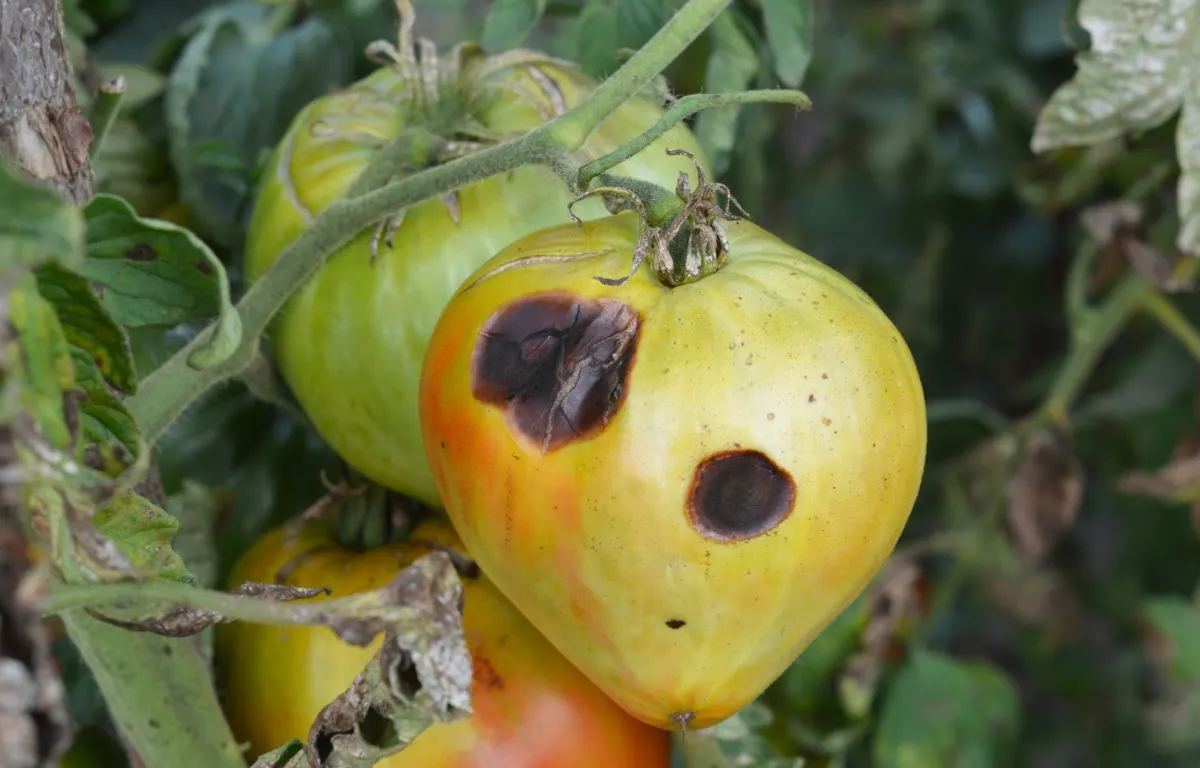
Anthracnose is a problem caused by a fungus called Colletotrichum phomoides. It affects the fruits of your tomato plants. Hot and humid weather allows this fungus to thrive, and overhead watering can splash it up from soil onto your plants.
Take care that the ideal environmental conditions for your tomato plants are maintained. You can also lessen the chances of a problem by harvesting tomatoes as soon as they are ripe. Over-ripe tomatoes are more likely to contract the disease.
If you have an anthracnose infection, dark bullseye circles appear on the ripe fruit. The spot will be mushy to the touch, and when you cut into it, you will discover a dark, soft spot that looks like rot.
Bacterial Diseases of Tomato Plants
As mentioned above, fungi are not the only potential culprit when looking for the source of a problem with tomato plants. Bacteria are sometimes also to blame.
11. Bacterial Spot, Bacterial Speck & Bacterial Canker
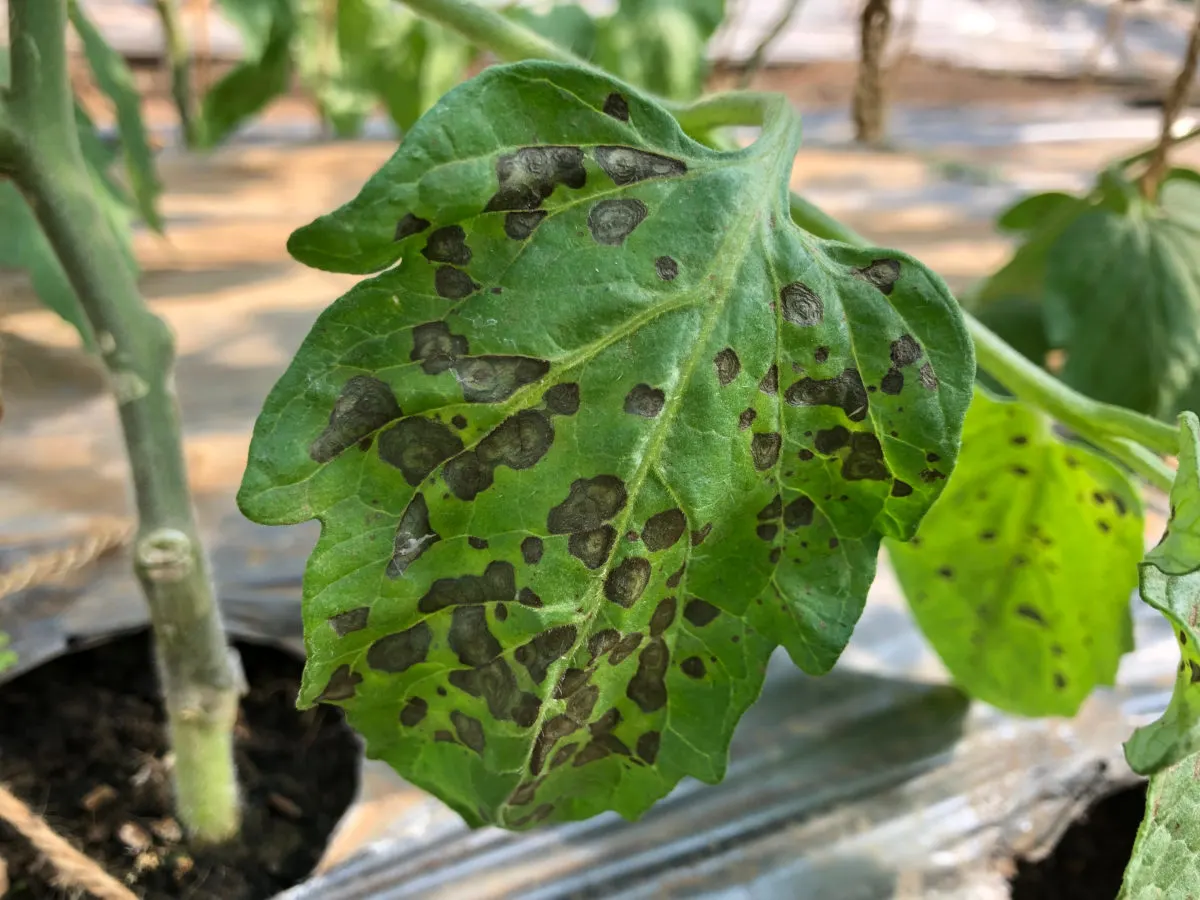
There are a number of different bacterial infections, including bacterial spot, bacterial speck and bacterial canker. There are a number of different bacteria strains that can infect tomato plants but which one is responsible will be impossible for a home-gardener to determine.
Symptoms often start with spotty dark lesions on the leaves and fruit. Eventually the leaves will yellow and eventually die.
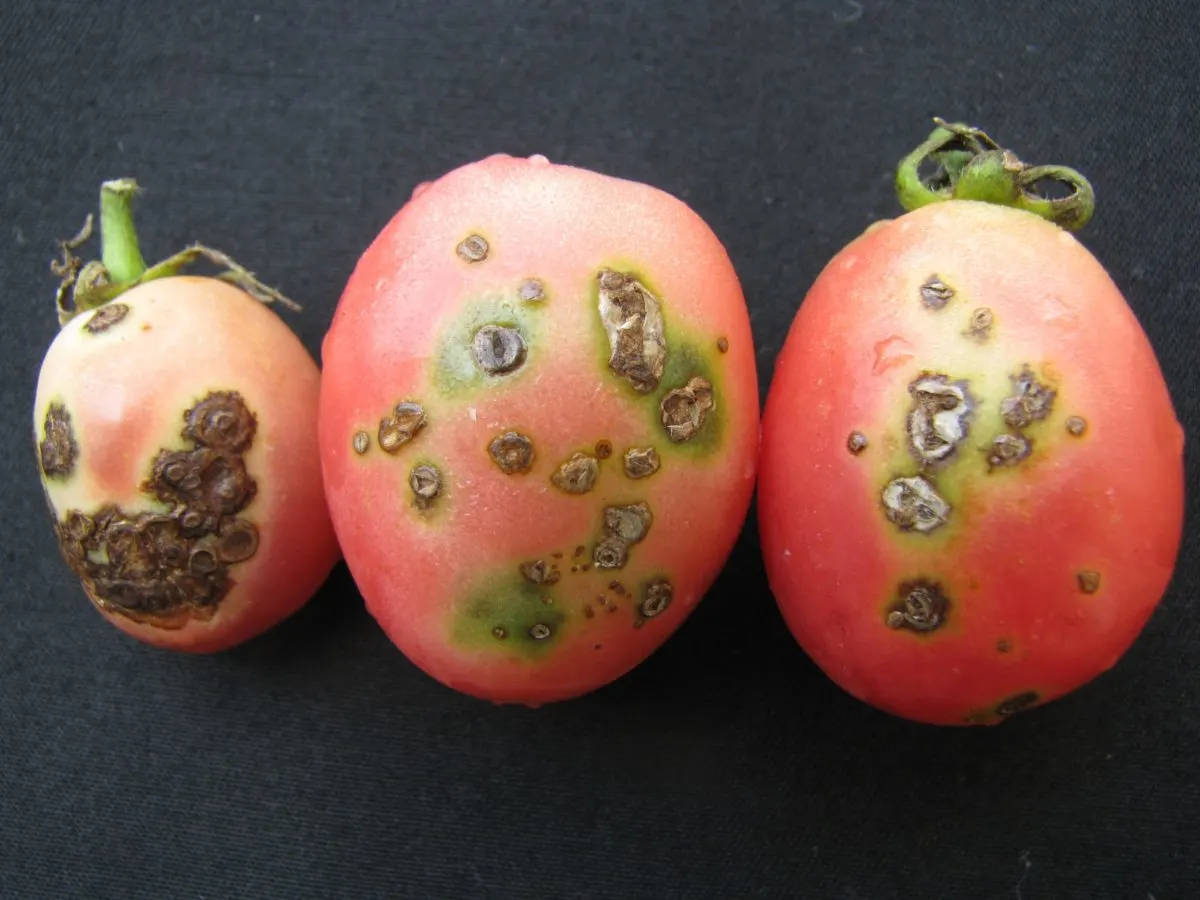
As with fungal infections, prevention is better than cure. It is very important to make sure that good environmental conditions are maintained and that you keep plants as healthy as possible so they are better able to withstand any infection.
What To Do About Bacterial Infections
Biological preparations based on the bacteria Bacillus subtilis have been suggested for the restriction of certain bacterial infections. Some of the fungicide treatments mentioned above may also help to restrict spread but they will not reach bacteria inside your plants.
Fungal pathogens multiply by spores. These are carried by wind or other means to new host plants, where they germinate and grow directly into the plant tissue. But bacterial pathogens are spread primarily by water. Bacteria must find a wound or natural opening to enter the plant and infect it, so taking care of plants should help to limit bacterial infections.
Unfortunately, short of removing affected material, there is usually little you can do. But removing affected material as soon as possible, and rotating crops, are the best ways to prevent recurrence.
The major sources of infection for these bacteria are thought to be seed and infected crop debris, so care should also be taken when sourcing seed and when disposing of plant material.
Viral Diseases of Tomato Plants
One final culprit responsible for tomato diseases is a virus. Viral diseases can cause a range of different visual symptoms, including patination, spots and stripes on foliage or fruits. Viruses spread when plants are stressed in some way, so again, good environmental control and good plant health in general are key.
There are several viral diseases that can affect tomato plants, but the one relatively common example is mosaic virus.
12. Tomato Mosaic Virus
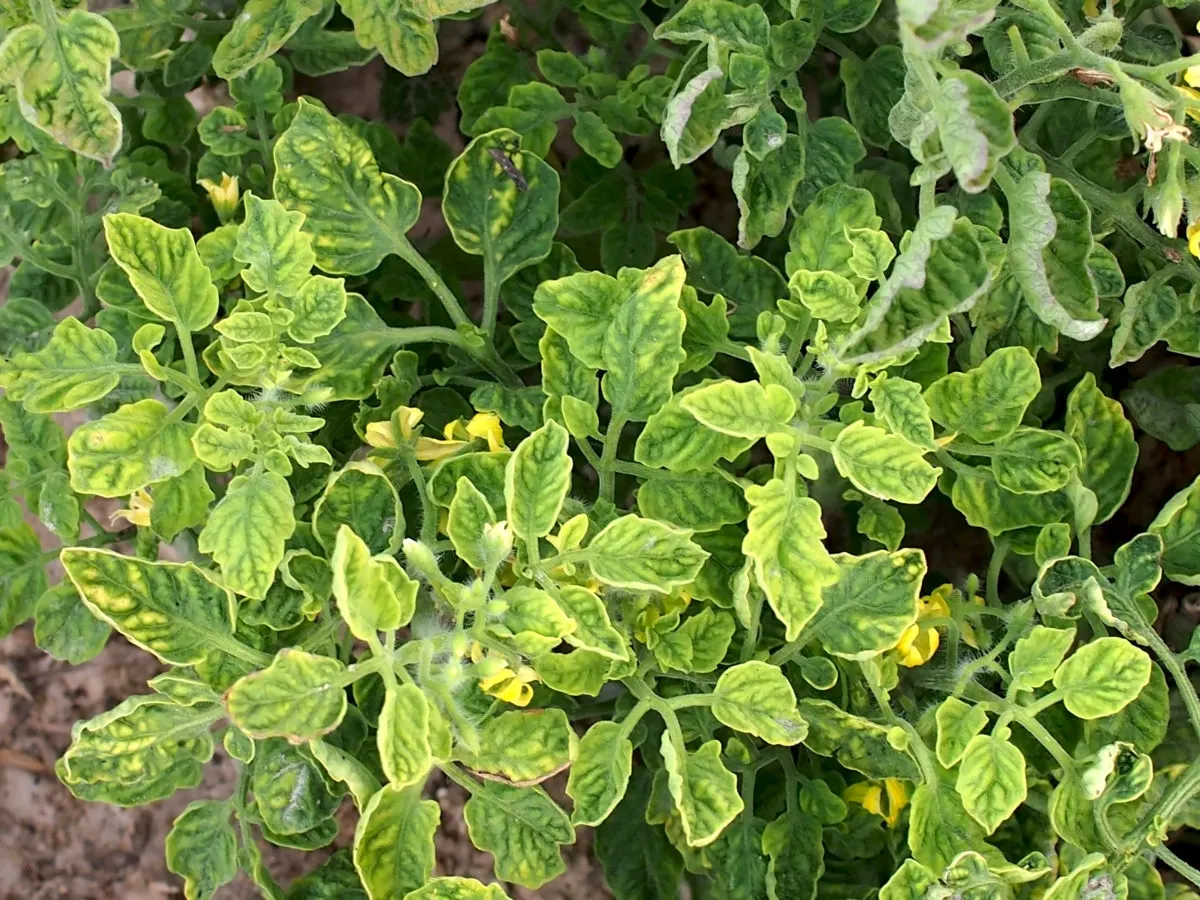
Tomato mosaic virus can be transmitted to your tomato plants mechanically, via tools or fingers. Since it also affects tobacco, smokers can transmit this virus to their plants. Occasionally, this virus can also be transmitted through seed.
Infected plants will display mosaic patterns of lighter green on leaves, leaves may be reduced in size, or streaked with brown. Fruits may fail to set and growth will likely be stunted and yield reduced, even where fruit set has occurred. Unfortunately, plants infected will not usually recover.
Remove affected material as quickly as possible, and employ good hygiene practices to reduce the spread of the virus. Avoid growing tomatoes or any other susceptible plants in the vicinity.
Of course, which tomato viruses and viroids you might encounter will depend on where you live.
Information of viruses in the US.
Is a Disease Actually The Problem?
Working out whether your plants are suffering from one of these diseases, and narrowing down the field to work out which infection is likely can be challenging. In some cases, close observation will provide clues that will lead you to the culprit. In other cases, things will be less clear and you may not be able to determine exactly which type of infection you are dealing with.
Sometimes, the problem is not actually a disease at all. Some of the common plant diseases are difficult to distinguish from other problems that are merely environmental.
Environmental Problems
Here are some common environmental problems you may encounter. A number of these are frequently mistaken for disease. But unlike many of the diseases mentioned above, these are often easily remedied. You can often avoid having the same problems in future simply by amending your gardening practices.
Leaf Roll
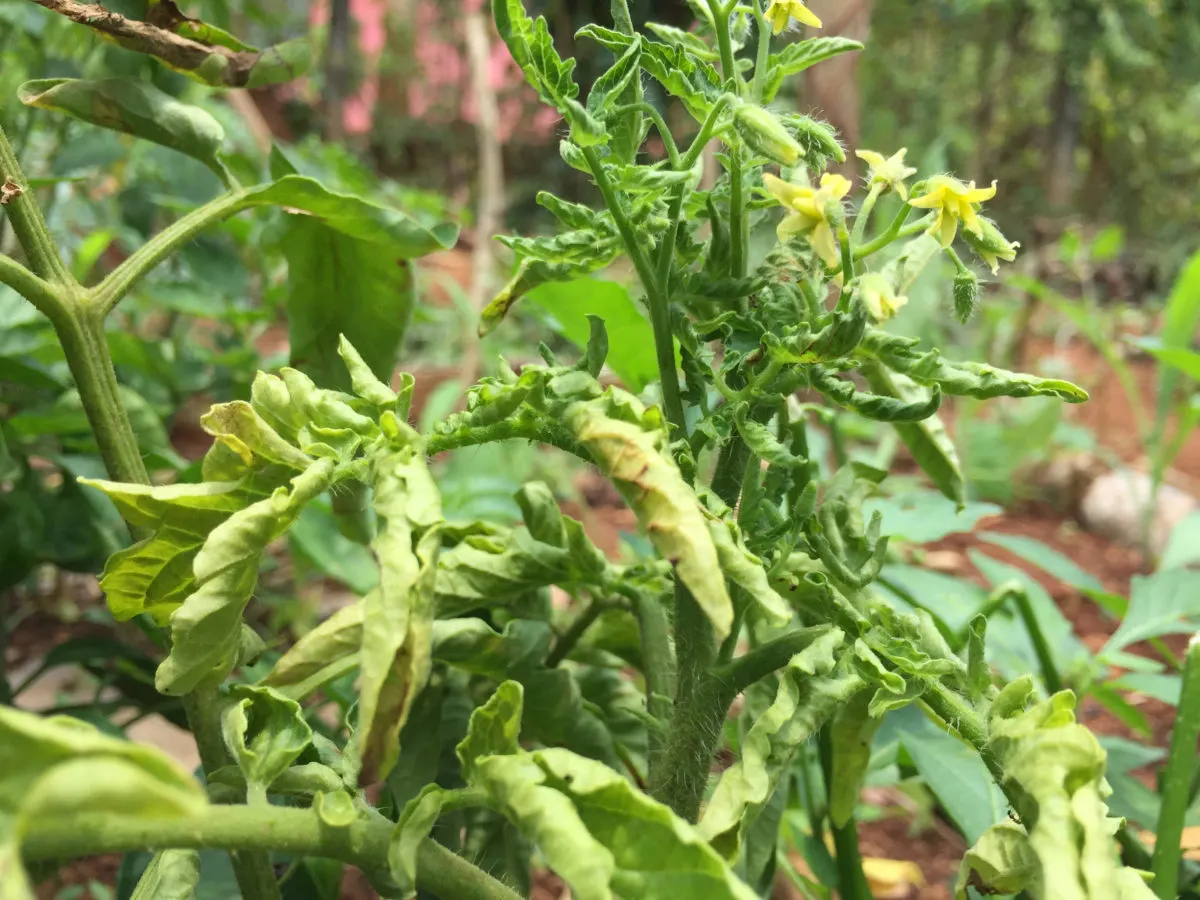
If your mature tomato plants suddenly curl up their leaves – especially older leaves close to the base of the plant, is is likely to be an environmental issue. High temperatures can be one cause of this problem. Wet soil can be another. Too much pruning may also have put plants under stress.
Though it looks bad, leaf roll will not generally affect fruit production. So you should still get a good crop. Just do what you can to improve the environmental conditions. And avoid over-pruning in future if you think this may have been the cause.
Blossom Drop
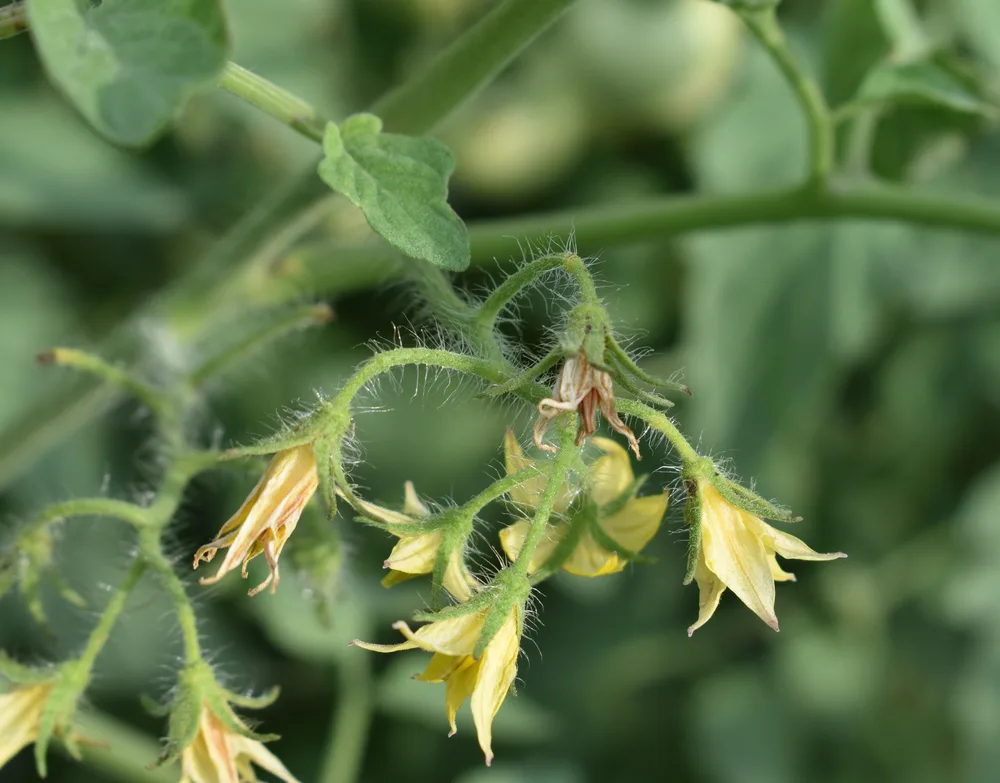
There are a number of reasons why flowers which appear on your tomato plants may have dropped before tomatoes developed. One common cause is temperature fluctuations. Tomatoes require night time temperatures of between around 50 and 70 F in order to retain their flowers. If the temperatures are outside this range, blossoms may drop off.
Other reasons for blossom drop include:
- Lack of water.
- Too much or too little nitrogen.
- Insect damage.
- Lack of pollination.
Of course, you cannot change your climate, but you can make sure tomatoes have the protection they need from extreme temperature fluctuations. You can also ensure that you meet your tomatoes’ water needs, and feed with an organic liquid feed when plants are in flower.
Attracting in beneficial insects with companion plants may also be an important step to take. Lack of pollination may be due to lack of wind to move plants and allow self-pollination. You may wish to aid pollination in greenhouse tomatoes yourself.
Blossom End Rot
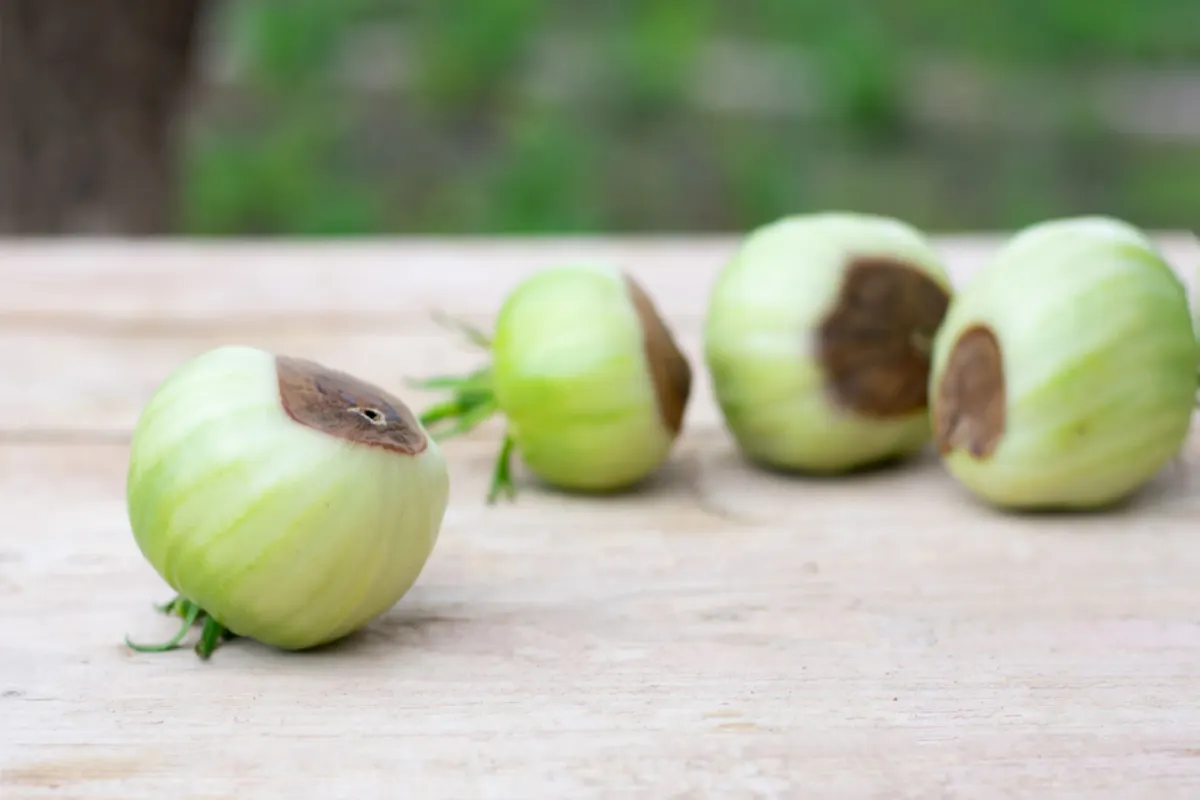
If your plants otherwise seem healthy, but ugly brown patches appear on the base of the fruits as they ripen, this may not be a disease. It may be a problem known as blossom end rot. The leathery patches grow, and when you cut open the tomato, the fruit inside looks mealy.
This problem is due to a lack of calcium. Either there is not enough calcium in the soil, or the soil pH is low, and the plant cannot absorb the calcium available.
Try adding egg shells and other calcium rich materials to a compost, and using this as mulch around your plants. If this is a recurring problem, undertake a soil pH test and, if the results show an extreme problem, you may add lime to address it. Alternatively, if the soil is not suitable where you live, consider growing your tomatoes in containers or raised beds.
Magnesium deficiency
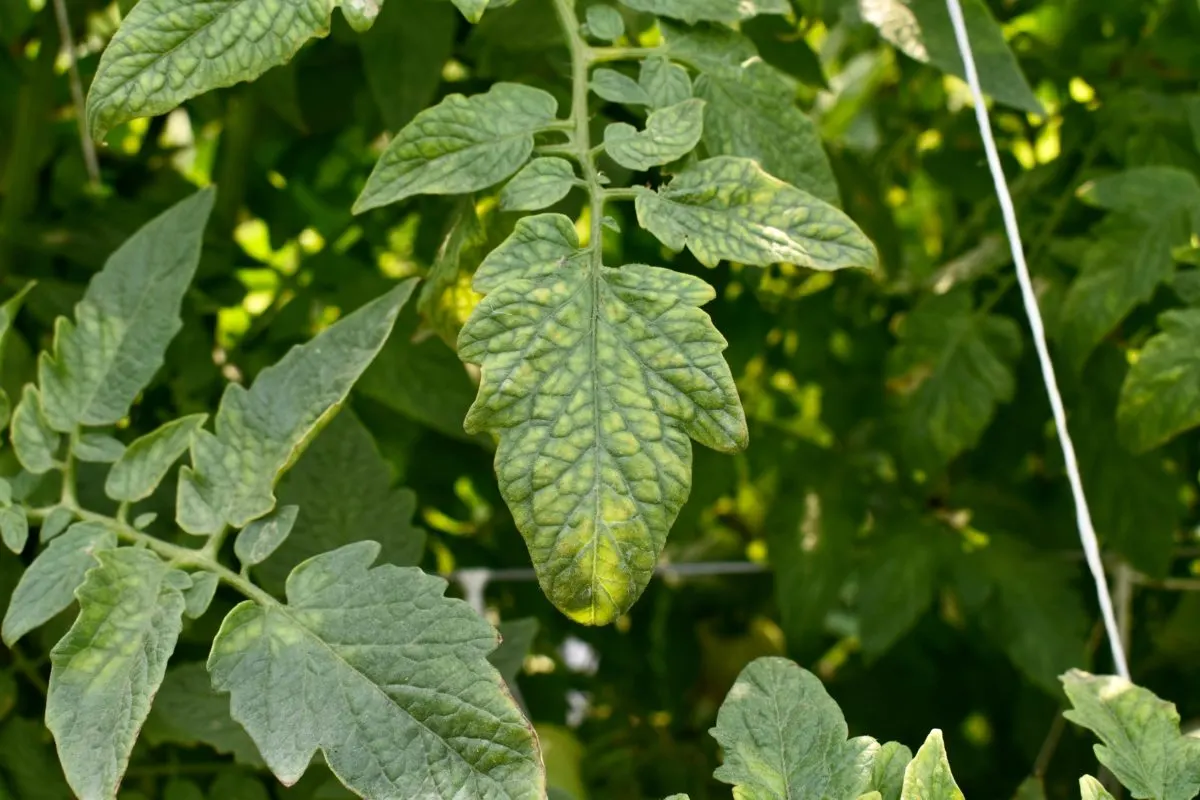
As mentioned above, magnesium deficiency can easily be mistaken for a fungal disease such as early blight. It can also be mistaken for other plant diseases. The symptoms usually include yellowing of leaves between veins. Sometimes, reddish brown tints will develop and leaves can fall off.
Magnesium is needed for healthy leaves and for photosynthesis. Magnesium shortage is common on light, sandy soils. But you may also cause a magnesium deficiency by over-using potassium rich fertilisers. Plants uptake potassium in preference to magnesium and this can cause a deficiency.
Combat a magnesium deficiency by applying a foliar feed of Epsom Salts in summer. (20g Epsom salts per litre of water.) Spray in dull weather to avoid leaf scorch. Avoid using too much tomato feed in future if this was the problem.
Poor Fruit Set
Poor fruit set is when you have had some flowers on your plants, but only a few small and tasteless tomatoes. Tomatoes poor fruit set can have several potential causes.
One cause may be that there was too much nitrogen in the soil. Or you fed with a nitrogen-rich mulch or liquid feed. Too much nitrogen means a plant puts of leafy growth at the expense of flowers and fruits.
Another potential problem is that pollination was poor. Attract in plenty of pollinators, ensure good ventilation and air flow, and if growing indoors, improve pollination by hand-pollinating your plants.
Related Reading: 4 Ways To Get More Of Your Tomato Flowers To Set Fruit
Hollow Fruits
This very disappointing problem is when plants look fine, but when you pick the fruits they feel light. And when you cut into your tomatoes you find that they are full of empty space.
Inadequate pollination, under-fertilisation, or poor soil nutrition can all be to blame.
Make sure you enrich the soil with a good quality organic mulch through the summer, and feed your tomato plants regularly with a good, organic tomato feed like comfrey tea.
Fruit Splitting
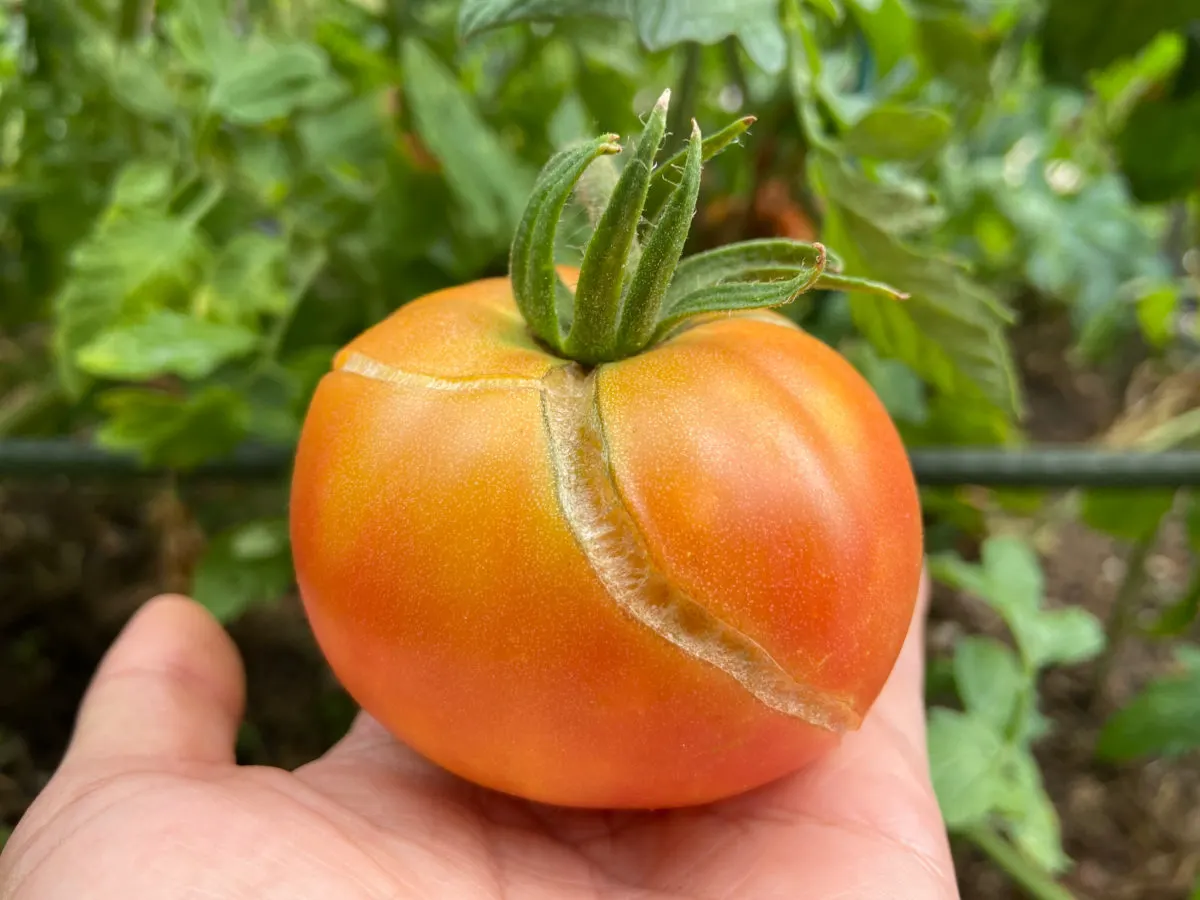
Unfortunately, healthy fruits will often split when there is heavy rain following a hot, dry period. You can also cause it by watering too lightly and then, suddenly, too heavily. Obviously, you cannot change the weather patterns.
But you can make sure that you water consistently, well and evenly throughout the growing season. And where hot sunny periods followed by heavy rain are common, you can consider growing your tomatoes under cover.
Sunscald
In hotter climates, healthy ripening fruits may be damaged by the sun. The suns’ rays can actually burn the tomatoes – much as they can our own skin. Yellow patches will develop on the red skin, which turn white and paper thin.
Obviously, the way to prevent sunscald is to ensure that tomatoes have some shade during the hottest part of the day during the hottest part of the year. Provide shade with other plants, or with shade netting. Leave some additional foliage on cordoned plants to ensure they are not too exposed.
Catfacing
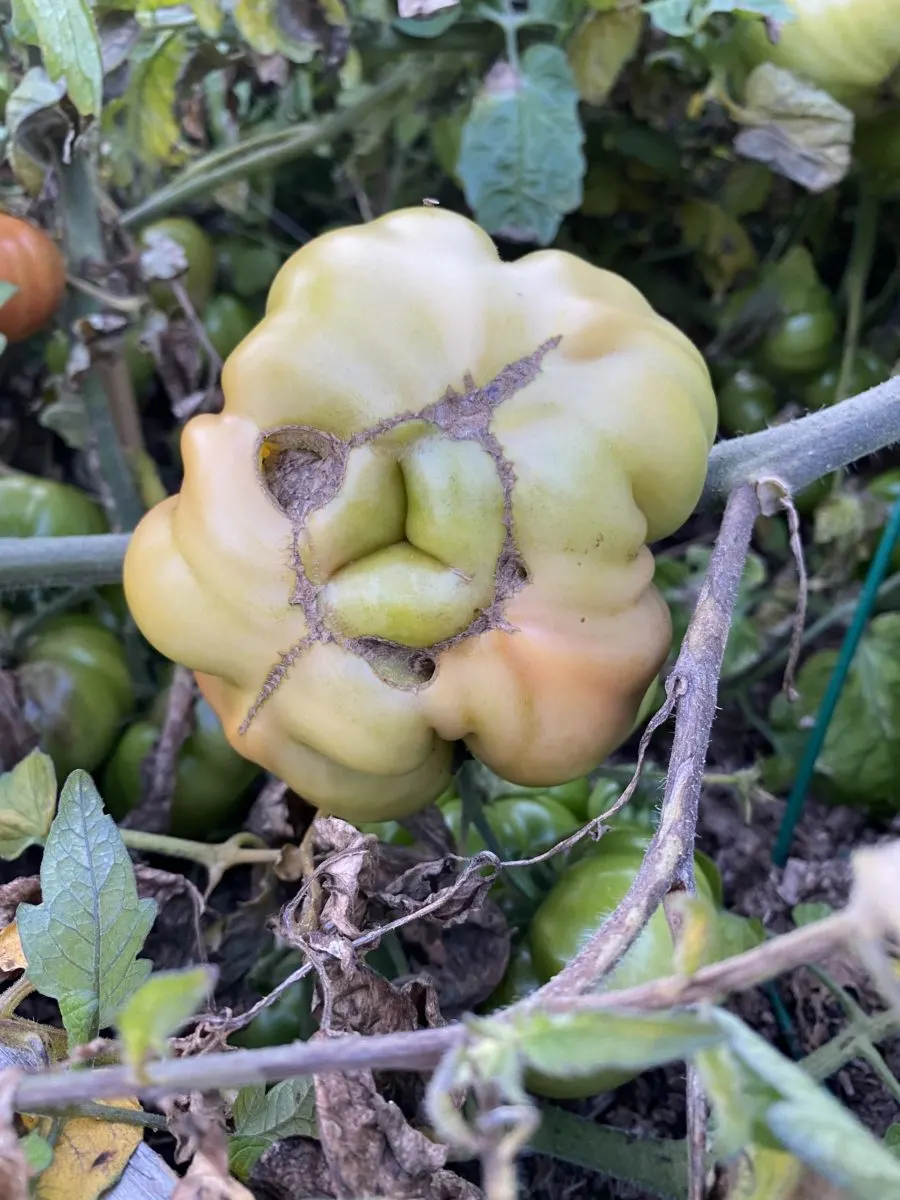
While sunscald is common only in warmer regions, catfacing, or deformed tomato fruits, is more common in cooler climate zones. Lumpy and bumpy, strangely shaped tomatoes often occur when cold temperatures cause blossom drop – but just after pollination. Petals drop off and some stick to the developing tomato. This can cause the deformation of its shape.
Plant tomatoes a little later in colder climes, or protect your tomato plants from cooler temperatures early in the season. (However, oddly shaped tomatoes may taste just as good as perfect ones.)
Insect Infestations
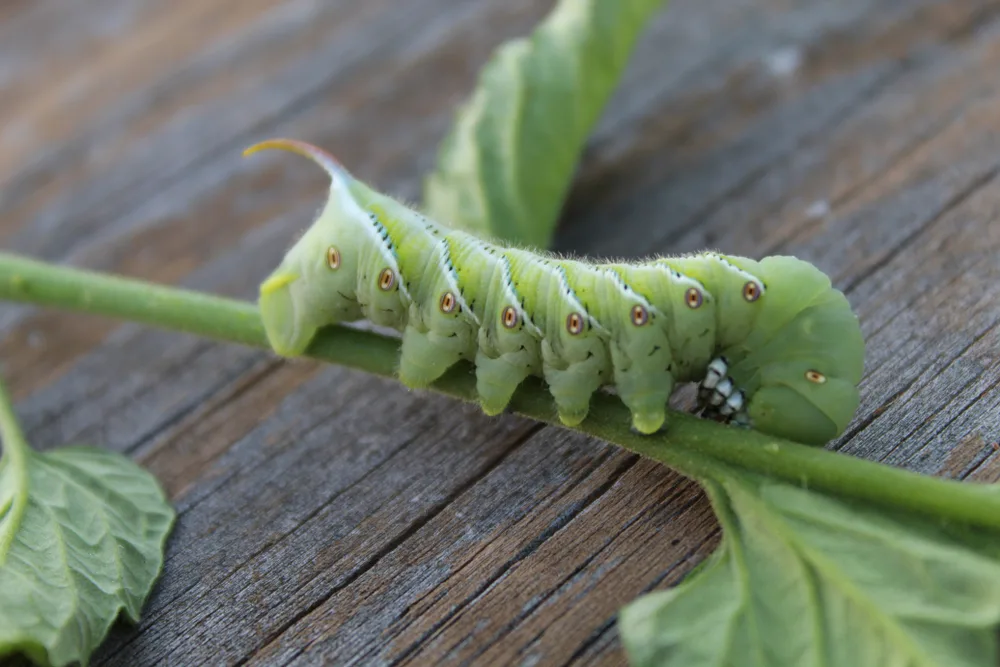
Another thing to consider is that insects may be responsible for the poor plants or damage you are seeing, rather than a tomato disease. Here are some possible culprits:
- Cutworms
- Hornworms
- Aphids
- Spider Mites
- Colorado Potato Beetles
- Stink Bugs
Of course, the insects you encounter as tomato pests will, like the diseases you see, depend on where you live and the pest populations to be found there. Keep your eyes open, when analysing your poorly plants, for any pest species that may be to blame.
There are a number of problems that can plague tomatoes. Reading through lists like the one in this article can make growing them seem rather daunting!
But remember, if you provide the right environmental conditions and garden well, you are far less likely to encounter these issues, and many are likely to be easier to deal with when you do.
So don’t be put off. Give tomato growing a go. Not everything will go well. But there is no doubt that you can have a lot of fun along the way!
